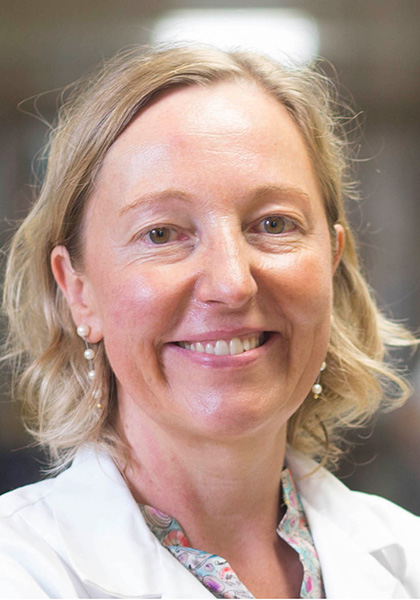Navigation auf uzh.ch
Navigation auf uzh.ch

On a recent hike in the mountains, it was noticeable that nearly all the walkers criss-crossing along the narrow paths were proficient walkers of a certain age in bright-colored outdoor clothing, usually armed with a pair of poles – for the sake of their knees. Younger people were virtually nowhere to be seen. And as someone who himself is over 60, in towns too, I can’t help but notice energetic older people bounding along the pavements with a spring in their step and who are anything but old and frail. We’re living in the era of healthy agers. Researcher on aging, Heike Bischoff-Ferrari, can only confirm my impression: “Over 50% of the Swiss participants in our DO-HEALTH study aged over 70 are healthy agers.”
These healthy seniors don’t have any age-related conditions that severely limit their day-to-day activities, or if they do, only those that are easily treatable (read: high blood pressure). They are physically and mentally active, maintain social connections and take care of their health. Bischoff-Ferrari talks about Switzerland’s trump card in this respect, as according to the study, the country has the joint highest percentage of healthy older people alongside Austria. At the bottom of the list is Portugal, with only 9% of healthy older people.
As in most industrialized nations, Switzerland’s life expectancy has been continually rising for over 100 years, now at 85.7 years for women and 81.6 years for men (as of 2021). The record life expectancy has brought a rise in the proportion of healthy years of life, as shown by the aforementioned golden agers, because just a generation ago, healthy over-70s were the exception rather than the rule.
But the age-related illnesses still strike – particularly cardiovascular diseases, cancer, dementia and diabetes – only later. The significantly increased life expectancy means the proportion of years spent with diseases and health problems has grown. According to statistics, older Swiss men spend an average of 12 years and older Swiss women 14 years in “poor health”.
This is amplified by the aging society. The over-60s already make up 20% of the population, and this figure is set to rise further. The main challenge of geriatric medicine is therefore to increase the number of healthy years of life in a growing number of older people: “The aim is to enable more people to stay healthy and active for longer,” says Heike Bischoff-Ferrari.

The main challenge of geriatric medicine is therefore to increase the number of healthy years of life in a growing number of older people.
She explains how this could be done using an easily accessible prevention concept based on six key physiological functions: mobility, memory, hearing, vision, mental health and diet. “We know that these six factors correlate with people’s current and future state of health,” she explains. The project participants can self-assess these six functions using a short questionnaire. If there is a deterioration, they get support to help themselves and if necessary, health workers intervene with simple measures.
It is important to assess these functions and to make it clear to older people that a deterioration should not just be accepted as a normal part of the aging process, stresses Bischoff-Ferrari. This could significantly reduce the number of falls, for example, which are a major health problem among older people. And the same goes for hearing loss. It is well documented that poor hearing contributes to dementia. It therefore makes sense to use a hearing aid sooner rather than later. The researcher has teamed up with Pro Senectute to make the ICOPE concept (Integrated Care for Older People) accessible to seniors across the canton of Zurich.
Advances in medicine mean that many people survive diseases that were once fatal and now grow old with disorders or conditions. With longer lifespans come more diseases that only appear in later life. Medical breakthroughs lead to the paradoxical situation in which people live longer and at the same time suffer from more conditions than they used to. Doctors talk about multiple illnesses, or multimorbidity, if patients suffer from two or more chronic illnesses or conditions.
“In older people, multimorbidity is the norm,” says Edouard Battegay from the URPP Dynamics of Healthy Aging. According to a recent study of general practitioners, half of over-65s in Switzerland suffer from three mild to moderate conditions, and 80% take at least one medication. Of the emergency hospital admissions in Internal Medicine at the University Hospital Zurich (USZ), 70% to 90% are “severely multimorbid”.

Multiple illnesses are a major challenge as treatments can interact with one another.
Multimorbidity is a major challenge for doctors as it can lead to conflicting treatment goals because the measures used to treat the individual illnesses or conditions interact with one another. Edouard Battegay gives the example of a patient who has to take blood-thinning medication due to heart problems (atrial fibrillation) and at the same time suffers from gastrointestinal bleeding. On the one hand, it would be advisable to discontinue the blood thinner, but on the other, this would increase the risk of complications linked to the heart problem.
Another case concerns high blood pressure and pain – both of which are common conditions among older patients. This situation is difficult as non-steroidal anti-inflammatory drugs (NSAIDs) to relieve pain can cause blood pressure to rise, and the same goes for some antidepressants, which are sometimes used to treat chronic pain. A third example concerns diabetes, which is also a common condition in older people, and respiratory diseases, which are treated using anti-inflammatory steroids. Steroids can cause diabetes, which is obviously undesirable.
“In all these cases, we need to prioritize between the various illnesses and try to find bespoke solutions,” says Battegay. The experience and awareness of medical staff play a crucial part here, since guidance on how to manage these sorts of difficult scenarios is virtually non-existent. Battegay considers this situation to be highly problematic as the therapeutic dilemmas described above are very common. A research team retrospectively examined the case histories of 166 patients involved in internal medicine emergencies at the USZ. In total, the authors elicited 239 therapeutic conflicts, of which 29% were considered “serious”. “Despite its prevalence, the issue of multimorbidity has not made it into the medical mainstream,” laments the doctor, who headed up the Department of Internal Medicine at USZ for 13 years.
Battegay decided to get the topic on the agenda and set up the International Center for Multimorbidity and Complexity in Medicine (ICMC). One of the goals of the start-up, which is still in the early stages, is to develop strategies for common medical conflict situations. For general practitioners in particular – a key point of contact for older patients, who are usually affected by several diseases – such guidelines would be essential. Battegay also thinks there is a need for action in cutting-edge medicine at university level. “There needs to be much greater emphasis on the comprehensive and coordinated care of multimorbid patients,” he says.
The last years of life are still often impacted by disease. Geriatric medicine is working very hard to shorten this final sick phase and extend healthy years of life. Heike Bischoff-Ferrari has high hopes for the new field of geroscience, which examines the biological processes of aging. This includes, for example, the changes in cellular energy metabolism that lead to chronic diseases and loss of function. Or the epigenetic factors that she says are likely to explain a large part of the variability in our life expectancies. They are looking for biomarkers, in other words measurable epigenetic or cellular variables that help determine biological protective mechanisms and the aging process. Like with blood pressure, preventive interventions could be carried out if the biomarker in question indicates that something is awry.
Bischoff-Ferrari is collaborating with the University of Toulouse in the field of geroscience through the HealthAge program. In May, none other than French President Emmanuel Macron approved CHF 10 million of seed capital for the program, says Bischoff-Ferrari proudly. The Precision Age project at UZH follows a similar strategic approach (see box).
Whether these and other geroscience projects will cause life expectancy to further rise as it has done in the past remains to be seen. According to statistics, the maximum lifespan in Switzerland could be reached by around 2150 at 112 for men and 115 for women – over 30 years longer than today. If this prediction holds true, then in future energetic centenarians will be marching along mountain footpaths.
This article is from the UZH Magazine's dossier "Healthy ageing" UZH Magazins 3/2023